What are These Tiny Yellow Bugs? Have you noticed tiny yellow bugs on your plant but are unaware of what they are? Are your plants suffering, gradually losing their healthy, aesthetic look, and appearing weak and flaccid?
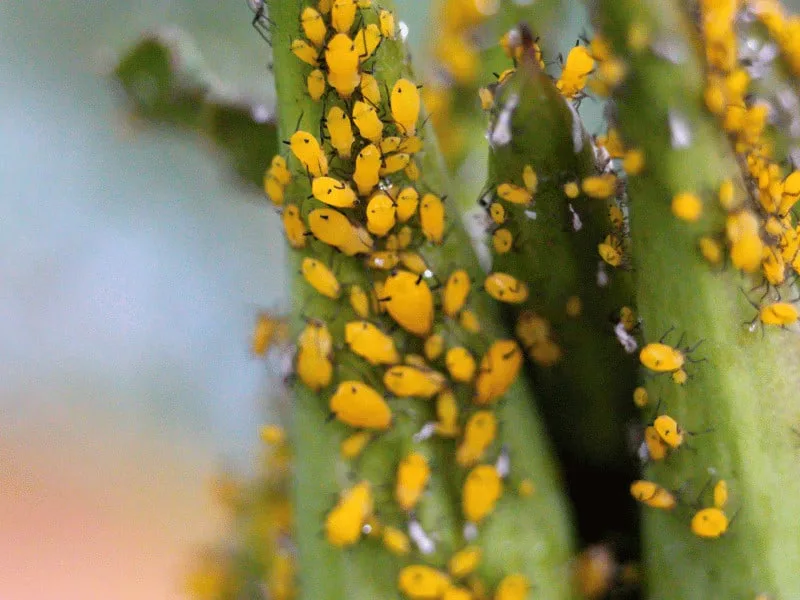
Table of Contents
Tiny Yellow Bugs
While these bugs may seem small, the damage they are causing will probably be intense.
Several small insects feed on outdoor and indoor plants. While some are seasonal and easy to eliminate, others multiply in hours, stripping the plant of nutrients all year.
The yellow bugs are mostly aphids, tiny pests you can still see with your eye despite their size.
Unless aphids are controlled, they can cause significant, irreversible damage. Apart from yellow, you may also see aphids in different colors.
However, some features, such as antennae and size, remain similar among all species.
Let’s take a closer look at these tiny troublemakers.
Takeaways
| Topic | Information |
| Tiny Yellow Bugs | Mostly Aphids |
| Characteristics | - Small insects - Feed on outdoor and indoor plants - Aphids are the most common type of yellow bugs - Aphids are tiny, pear-shaped, with long antennae and darker cornicles - Different aphid species have similar features |
| Damage | - Intense damage despite small size - Feed on plant juices, leading to discoloration and distortion - Transmits bacterial and fungal infections - Target both leaves and stems |
| Effects on Plants | - Fungal growth due to honeydew secretion - Discolored leaves and curling - Distorted flowers and fruits - Inhibition of new growth - Increased susceptibility to diseases and pests |
| Treatment | - Physically removing aphids - Using water pressure to dislodge aphids - Applying Neem oil as a repellent - Washing with water and soap - Prevention methods: horticultural oil, beneficial insects, repellant plants |
What are these Tiny Yellow Bugs?
Small yellow bugs crawling on plants are aphids in most cases. They are small, measuring only 1/4th inch (0.6 cm), but are often visible to the naked eye. However, all aphids have pear-shaped bodies, long antennae, and cornicles slightly darker at the ends.
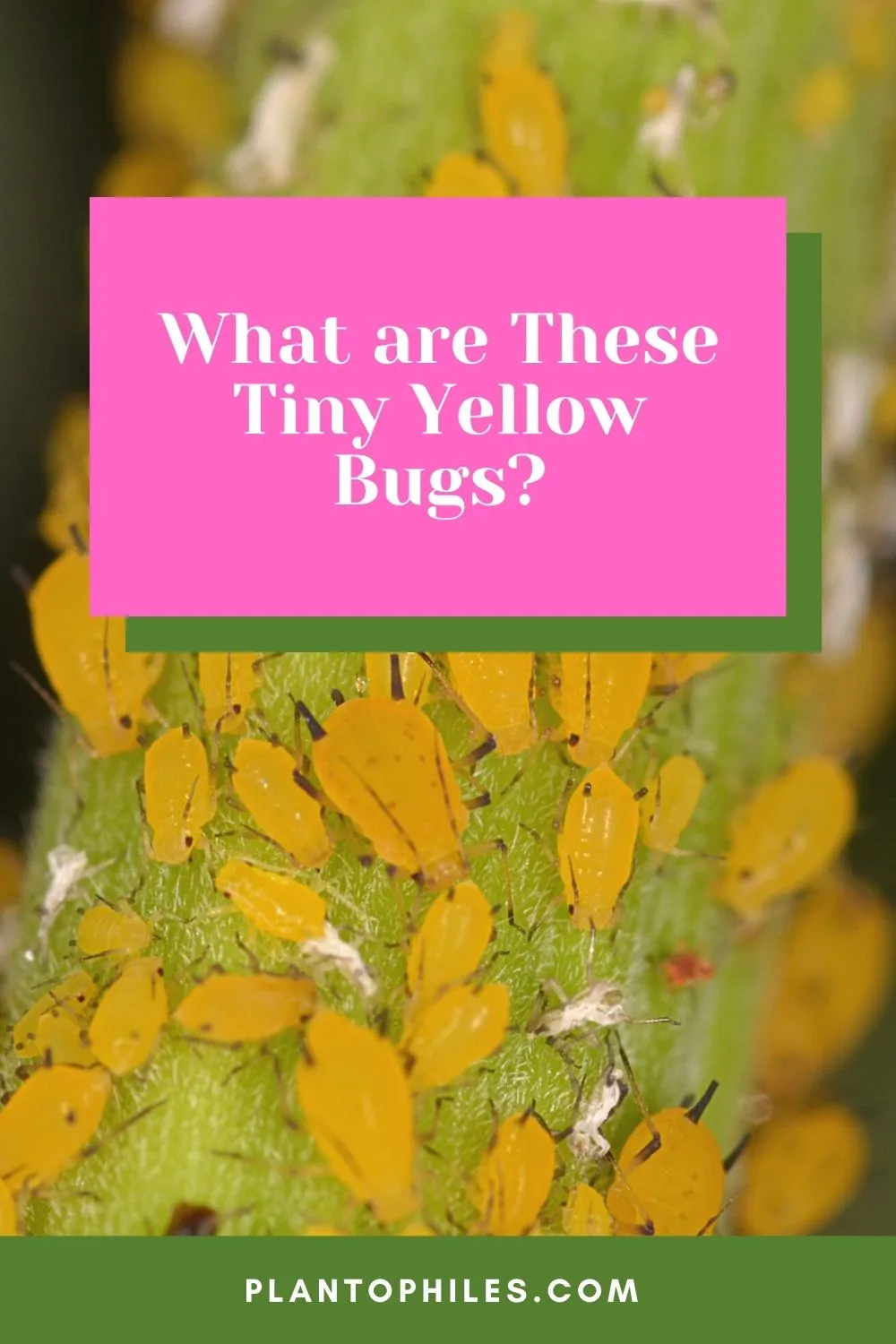
Aphids at a Closer Look
These tiny yellow bugs can damage plants within days, often completely depleting them of nutrients.
Aphids can survive almost in all environments but thrive exceptionally fast on dry food or fruit plants.
They favor shrubs, trees, bushes, vegetable leaves, and ornamental plants. Aphids hide in leaves’ curls and undersides, flowers (inside and under petals), and stems.
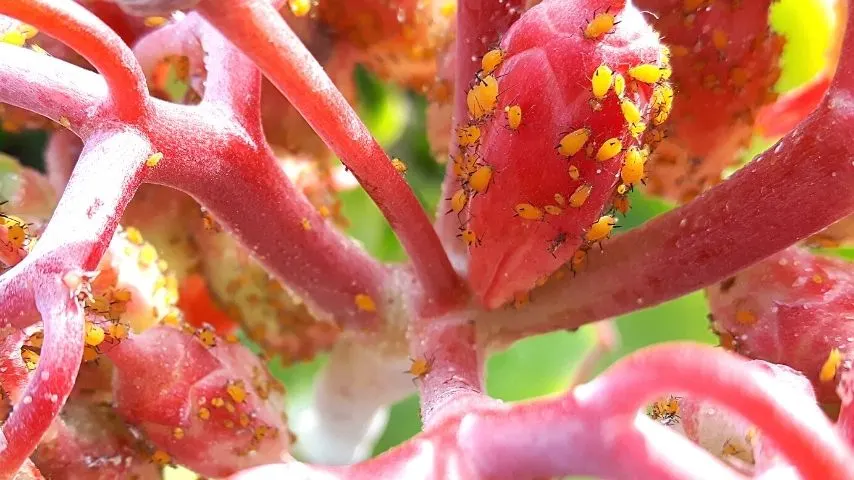
Spring and autumn seasons are when they multiply considerably fast, appearing in all different colors.
All aphids feed on plant juices and nectar, leading to leaf and stem discoloration. Along with sucking cell sap, they transmit bacterial and fungal infections from one plant to another.
The characteristic distortion seen in aphids‘ infestation is mostly due to a transmitted virus.
Aphids flourish on plants’ phloem sap, which is fairly rich in minerals, sugars, and other elements. The phloem is what transports the plant’s sap throughout its entirety.
Furthermore, these tiny bugs target the xylem, where sap travels from the roots.
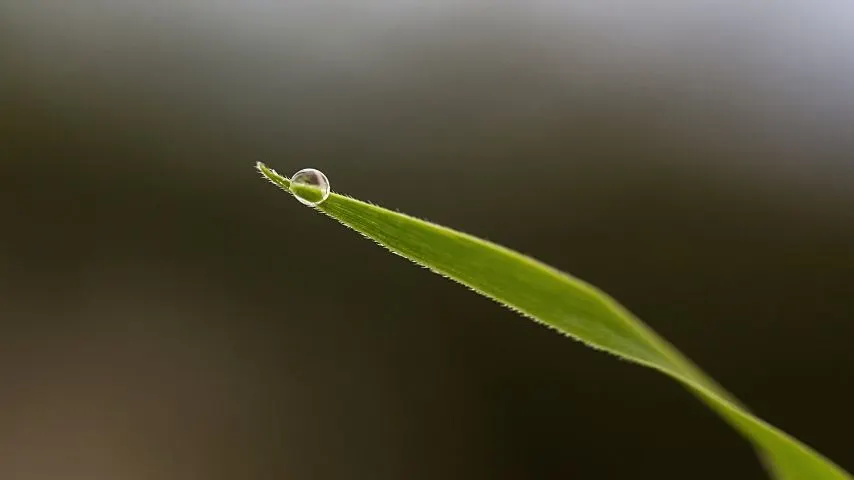
The aphids draw water from the xylem continually, dehydrating the plant.
Damage Aphids Can Cause to Plants
Aphids can damage plants in a wide variety of ways, including the following:
1. Fungal Growth
If you see aphids on your plants along with sticky growth, your plant harbors fungal growth.
The sticky substance is often found on leaves and stems, prime locations for aphids. The sticky growth is known as honeydew, which attracts more insects.
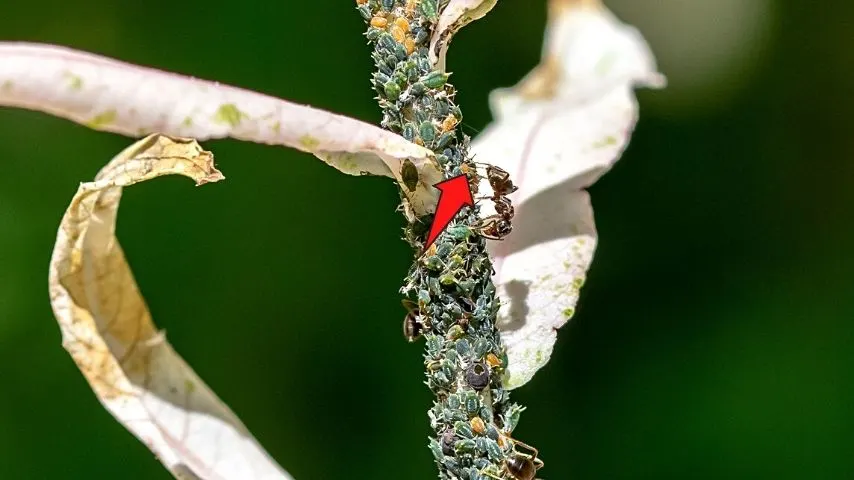
Eventually, sooty mold develops on the plant, making things tougher for the owner.
2. Discolored Leaves
Aphids do not cause much damage initially, but the damage becomes apparent as their numbers increase. The large aphids’ population turns leaves yellow and deprives them of nutrients.
The leaves stop growing, and the ends curl or become distorted.
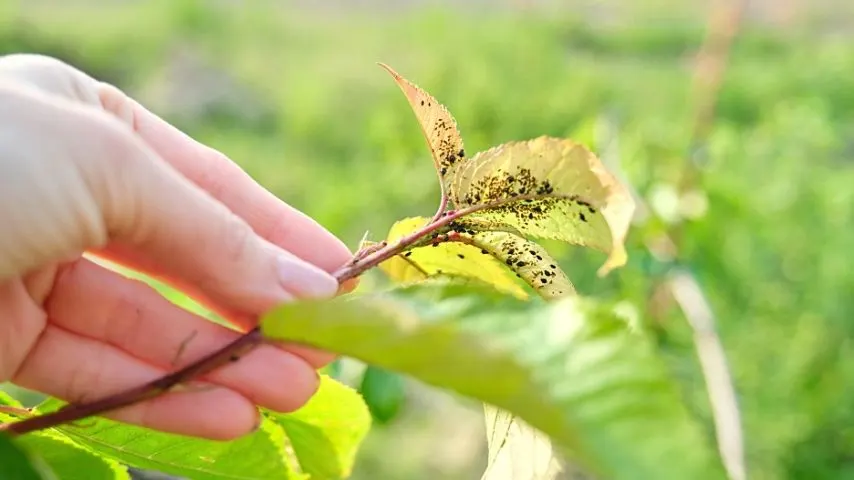
Again, the aphids produce honeydew all over the leaves, inviting more bugs. The honeydew gradually turns black as it becomes a fungal breeding ground.
Apart from damaging, the aphids also use leaves as hiding places, the undersides specifically.
3. Distorted Flowers and Fruits
Aphids thrive on plants with sweet fruits and flowers, as they contain nectar. These tiny bugs distort the shapes of flowers and fruits entirely, inhibiting new growth simultaneously.
Along with the taste, the look of fruits and plants is also ruined.
The aphids promote black sooty mold all over the leaves’ surface area, which blocks their sunlight, and the plant ceases to grow.
4. Inhibition of New Growth
Aphids are quick to feed on new growth, as it is often full of fresh nectar. Therefore, young branches, fruits, and buds are mostly where you will find them.
These insects pierce the tender stems and suck all the nutrient-rich sap, leaving behind a yellow or curled plant.
Other issues include deformed flowers, distorted young buds and leaves, and damaged, sour fruit.
5. Increased Susceptibility to Diseases and Pests
The aphids don’t cause short-term harm only but also decrease the plant’s overall resistance to diseases and pests.
The withdrawal of large quantities of cell sap leads to local chlorosis, weakening the plant and increasing its susceptibility to pathogens and other insects.
How to Treat an Aphids’ Infestation
Fortunately, there are plenty of ways to get rid of these tiny aphids. They include the following:
1. Removing Aphids Physically
Aphids are pretty small, but they are visible to the naked eye. Wear microscopic glasses, and you’ll be able to remove them much faster.
Pick each of these plant bugs manually or with forceps, especially if the infestation has just begun.
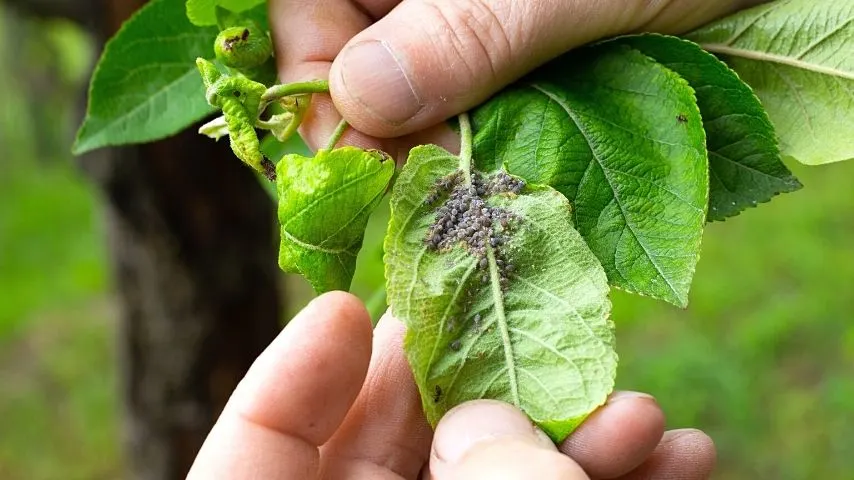
Use a good pair of gloves while doing it so there are minimal chances of allergic reactions.
You can pinch or brush the bugs from the stems and leaves and shake the plant gently for most to fall off.
If the infestation is focused on one or two stalks or branches primarily, then pruning is a better option.
However, please remember to pour soapy water at the end to kill the remaining bugs over the rest of the plant. Throw away the infested branches far away from your garden.
2. Using Water Pressure
If the aphids are young, using water pressure to bring them down is a great option. Please pick up your garden hose and plug it into a water pump that’s portable.

Start spraying the plant, targeting the bugs crawling over the plant. However, be careful when pouring the younger off-shoots and flowers.
This method works great for the plants that are tough or well-established.
3. Neem Oil
If you like traditional or organic methods, opt for Neem oil to eliminate these tiny bugs. Dilute the neem oil in some water and spray it over the plants in ample amounts.
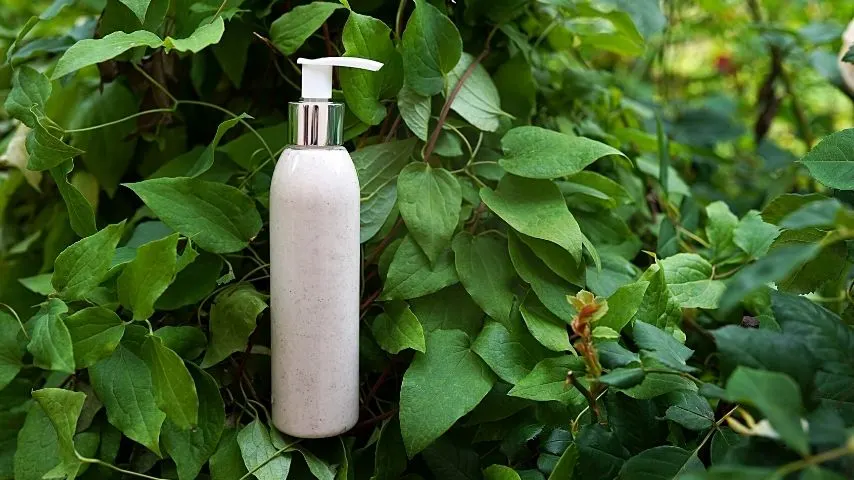
The chemicals present in Neem oil act as repellants to these yellow aphids and other pests, such as leaf miners, ants, cabbage worms, beetles, and mealy bugs.
Neem oil must not be used only when the plant is infected. You can occasionally spray or apply it to the plant to prevent possible infections or pest infestations.
4. Water and Soap
The most traditional way to remove aphids from plants is by washing them with water and soap. Choose mild, plant-friendly detergents to make a solution.
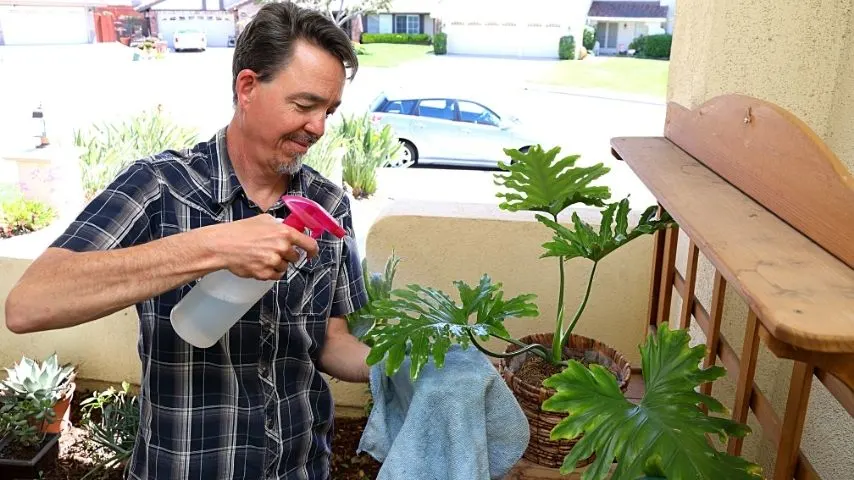
Take a bucket of water or a spray bottle, add some tablespoons of dishwashing soap, mix or shake, and spray away the plant.
FAQ
How do I know Aphids infest my plant?
An aphid-infested plant will have yellow bugs crawling, mostly on the leaves, stems, fruits, and flowers. You’ll also notice stunted growth, curled or distorted foliage, and discoloration of various parts. There may also be a sticky substance, honeydew, on the leaves or black moldy sooty growth.
How can I rid my plants of aphids quickly?
You can get rid of aphids in several ways, including picking them off physically, using neem oil, washing the plant with soap and water, and using intense water pressure to bring down the plants.
How do I prevent aphid infestation?
To prevent aphids infestation, use horticultural oil, such as neem oil occasionally, attract some beneficial insects, including ladybugs and lacewings, to your garden for eating the aphids, and grow repellant plants, such as catnips.
Conclusion
This is the answer to “What are These Tiny Yellow Bugs,” and I hope this guide is helpful.

Daniel has been a plant enthusiast for over 20 years. He owns hundreds of houseplants and prepares for the chili growing seasons yearly with great anticipation. His favorite plants are plant species in the Araceae family, such as Monstera, Philodendron, and Anthurium. He also loves gardening and is growing hot peppers, tomatoes, and many more vegetables.


